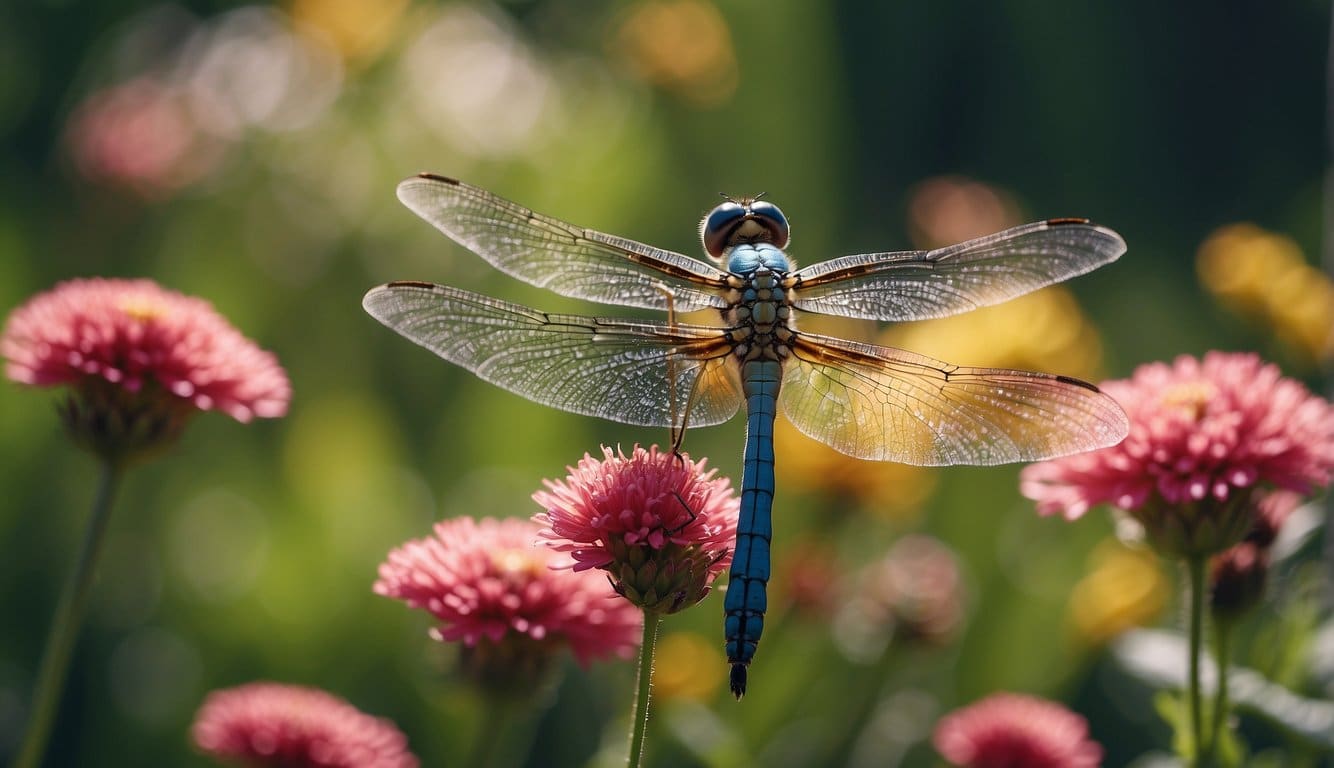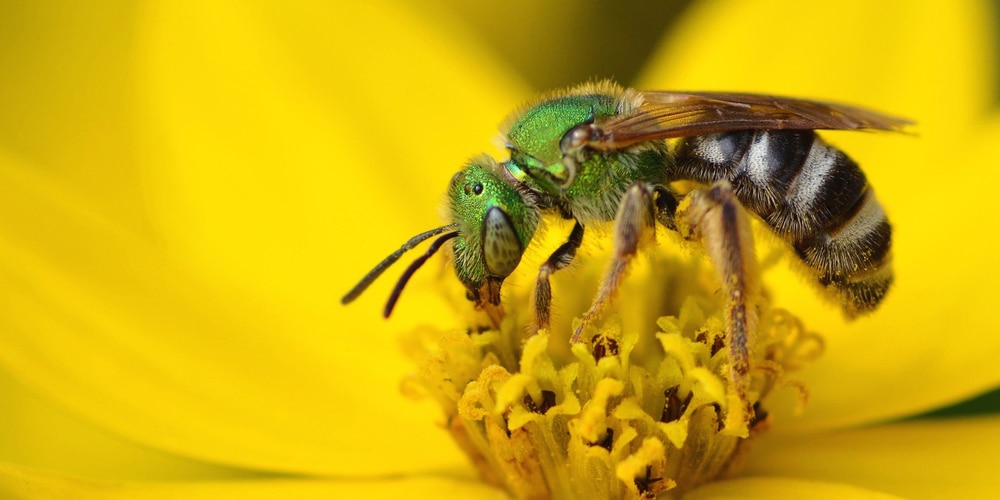| Question | Are Dragonflies Pollinators? |
|---|---|
| Answer | Not Significantly |
| More Info | Dragonflies are not considered significant pollinators. Their diet mainly consists of other insects, and they do not typically visit flowers for nectar, which is a key part of the pollination process.
They play a crucial role in controlling mosquito populations and other small insects. While they might incidentally come into contact with flowers, their contribution to pollination is minimal compared to bees, butterflies, and other pollinating insects. |
When exploring the bustling activity of a garden, you may marvel at the darting agility of dragonflies.
These aerial masters are often found flitting around water bodies, their metallic wings shimmering in the sunlight.
While they are known predators of many insects including mosquitoes, you might wonder if they contribute to pollination.
Despite their frequent visits to gardens, dragonflies are not considered primary pollinators like bees or butterflies.
Their body structure is not designed to carry pollen efficiently, and they do not have the same feeding habits that would typically facilitate the transfer of pollen from one plant to another.
However, dragonflies do play a supportive role in the ecosystem that indirectly benefits plants.
By preying on insects that can be harmful to plants, dragonflies contribute to the well-being of a garden by sustaining a balanced insect population.
While not agents of pollination, dragonflies are essential for maintaining a healthy environment where pollinators can thrive.
Their presence underscores the complexity and interconnectivity of ecosystem dynamics, influencing plant life in more subtle ways.
Dragonfly Biology
Understanding the biology of dragonflies gives you insights into their role in various ecosystems and clarifies whether or not they contribute to pollination.
Anatomy and Biological Characteristics
Dragonflies are identified by their elongated bodies, large multifaceted eyes, and two pairs of strong, transparent wings.
Their front and rear wings differ in shape, allowing for incredible flight agility.
Their compound eyes are a biological marvel, with thousands of lenses providing a nearly 360-degree view, enabling them to spot prey and avoid predators effectively.
Dragonflies possess a unique set of mouthparts designed for predation, including powerful jaws that capture and consume a variety of insects in flight.
This predatory nature is crucial in garden ecosystems, where they help control pest populations, including mosquitoes, flies, and other small insects.
Life Cycle and Habitat
The life cycle of a dragonfly is fascinating, consisting of three distinct stages: egg, nymph, and adult.
Dragonflies begin their life in water, where eggs are laid on or near aquatic plants.
Upon hatching, the nymph (or larva) stage ensues, characterized by an aquatic lifestyle where they are voracious predators.
- Egg: Laid in or near water.
- Nymph: Aquatic stage with multiple molts.
- Adult: Airborne, predatory stage.
As they transition to adults, dragonflies undergo metamorphosis, emerging with the ability to fly and leaving their aquatic nurseries.
Your local water bodies such as ponds, streams, and wetlands serve as critical habitats for these stages.
Dragonflies are often seen near water because that is where their life begins, and as adults, they return to these areas to mate and lay eggs, continuing the cycle.
Pollination and Dragonflies
In your exploration of pollinators, you might wonder about the role of dragonflies. Do these agile insects contribute to the pollination of plants?
Role in Ecosystem
Dragonflies are predatory insects that play a vital role in maintaining the balance of the ecosystem.
They primarily feed on other insects, notably mosquitoes, gnats, and flies, which helps control these populations.
Although they are not considered direct pollinators, they influence the ecosystem in other significant ways that can indirectly impact plant pollination.
For instance, dragonflies reduce the number of herbivorous insects, which can contribute to a healthier plant life by limiting leaf damage.
Dragonflies and Plant Interaction
Although the dragonfly may visit flowers, its interactions with them are not for pollination purposes.
Dragonflies perch on plants for reasons such as resting or hunting, yet they do not transfer pollen effectively.
Their bodies are not structured for carrying pollen, and they lack the feeding behavior that promotes the movement of pollen from one flower to another.
Nevertheless, by controlling pest populations, these fascinating insects still play a supporting role in creating a more favorable environment for pollinators.
Pollinators Compared
In exploring the role of various creatures in pollination, it’s essential to understand that not all insects contribute to pollination in the same way. Some, like dragonflies, do not pollinate despite their frequent presence around flowers.
Dragonflies Versus Bees
Dragonflies are often seen around flowers and water plants, but they do not function as pollinators.
Your garden may benefit from their presence since they are excellent at pest control, feeding on numerous insects, but they do not transport pollen.
On the other hand, bees are the champions of pollination.
They have specialized body parts, such as pollen baskets, which enable them to efficiently collect and transfer pollen between flowers, thereby supporting plant reproduction.
Synergy With Other Pollinators
While dragonflies do not contribute to pollination, they do play a vital role in the ecosystem that indirectly supports pollinators.
By preying on pest insects, they help maintain a balanced ecosystem which is crucial for the health of plant-pollinator interactions.
Other pollinators, like butterflies, depend on a variety of healthy plants for survival, and dragonflies contribute to this biodiversity by controlling pest populations.
Frequently Asked Questions
Explore some of the most common curiosities surrounding dragonflies and their interaction with plant life, delving into their ecological roles and behaviors.
Do dragonflies assist in the pollination process of plants?
No, dragonflies do not typically assist in the pollination process of plants. They are predators, not pollinators, and their diet consists mainly of other insects.
What role do dragonflies play in garden ecosystems?
In garden ecosystems, dragonflies serve as natural pest control agents by preying on mosquitoes, gnats, and flies, thus helping to maintain a balanced environment.
Can dragonflies have a negative impact on other pollinator populations?
Dragonflies primarily consume flying insects and generally do not interfere significantly with other pollinator populations.
What is the dietary behavior of dragonflies regarding pollen?
Dragonflies do not eat pollen or nectar. They are carnivorous and ingest other insects for nourishment.
In what ways are dragonflies considered beneficial to ecological balance?
Dragonflies are beneficial predators that help control the populations of pest insects, contributing to ecological balance in their habitats.
How do dragonflies interact with various plant species in their environment?
While dragonflies do not pollinate, they can often be found close to various plant species. These environments attract their prey, resulting in incidental encounters with plants.
Last update on 2025-06-06 / Affiliate links / Images from Amazon Product Advertising API





